
What’s the best smart home technology for modern living? With over 69% of U.S. households using at least one smart device, the rise of smart home technology has transformed how we live. These innovations enhance convenience, improve security, and boost energy efficiency in our homes.
From intelligent lighting systems to voice-controlled thermostats, smart devices integrate seamlessly into daily life, creating a personalized and connected experience.
In this article, we’ll explore the top smart home technologies, their unique benefits, and how to choose the best options for your needs.
What is Smart Home Technology?
Smart home technology refers to integrating devices, systems, and appliances in your home that can be controlled remotely through the internet or automated to work seamlessly together. This technology transforms ordinary homes into highly connected, efficient, and secure living spaces.
Components of Smart Home Systems:
- Smart home devices: These include items like thermostats, lights, locks, cameras, and speakers, all of which can be connected and managed via a central hub or mobile app.
- Home automation systems allow you to automate various functions in your home, such as setting the thermostat, locking doors, or adjusting lighting based on time or activity.
- Smart home security: Integrated security systems offer peace of mind, including surveillance cameras, motion sensors, and smart doorbells that send alerts to your phone.
Examples of Smart Home Devices:
- Smart thermostats: Adjust your home’s temperature based on your schedule or preferences.
- Bright lights: They can change colors or dim automatically, saving energy.
- Smart locks: Let you lock/unlock doors remotely and monitor entry.
Connectivity:
- Wi-Fi, Zigbee, and Bluetooth are the standard protocols enabling devices to communicate. Wi-Fi provides fast, reliable connections, while Zigbee and Bluetooth offer energy-efficient solutions for devices that don’t require constant internet access.
Smart home technology is rapidly transforming our lives, bringing convenience and security into our homes.
Top Categories of Smart Home Technology
Smart home technology transforms modern living, offering convenience, security, and energy efficiency.
Here’s a breakdown of the top categories you should explore:
- Home Automation Systems
Smart home devices like lights, thermostats, and blinds have revolutionized home management. Home automation systems enable you to control these features remotely, optimizing comfort and convenience.
- Lights: Brands like Philips Hue allow you to adjust lighting to suit your mood or save energy by scheduling on/off times.
- Thermostat: Nest’s smart thermostat learns your preferences, ensuring energy-efficient temperature control.
- Blinds: Somfy provides automated blinds that adjust based on the time of day.
Photo Credit: The Rescursive
2. Smart Security Systems
Smart home security offers peace of mind with real-time monitoring and remote access.
- Cameras: Ring cameras provide security footage straight to your phone.
- Doorbells: Nest Hello lets you see who’s at your door, even when you’re away.
- Locks: August’s smart locks allow keyless entry and remote access to your home.
3. Entertainment Technology
Innovative entertainment systems are central to modern homes.
- Smart TVs: Samsung’s QLED TVs offer streaming options and voice control.
- Speakers: Sonos delivers high-quality sound through smart speakers that can integrate with other smart devices.
4. Energy Management
Smart home devices can help you reduce your energy consumption.
- Smart Plugs: TP-Link’s Kasa smart plugs help you track energy use and schedule devices to turn off.
- Solar Panels: Companies like SunPower offer bright solar panels that optimize energy use and savings.
Smart home systems enhance convenience and add value to your home. Integrating smart devices provides greater control over daily tasks, improving efficiency and security.
How to Choose the Best Smart Home Technology
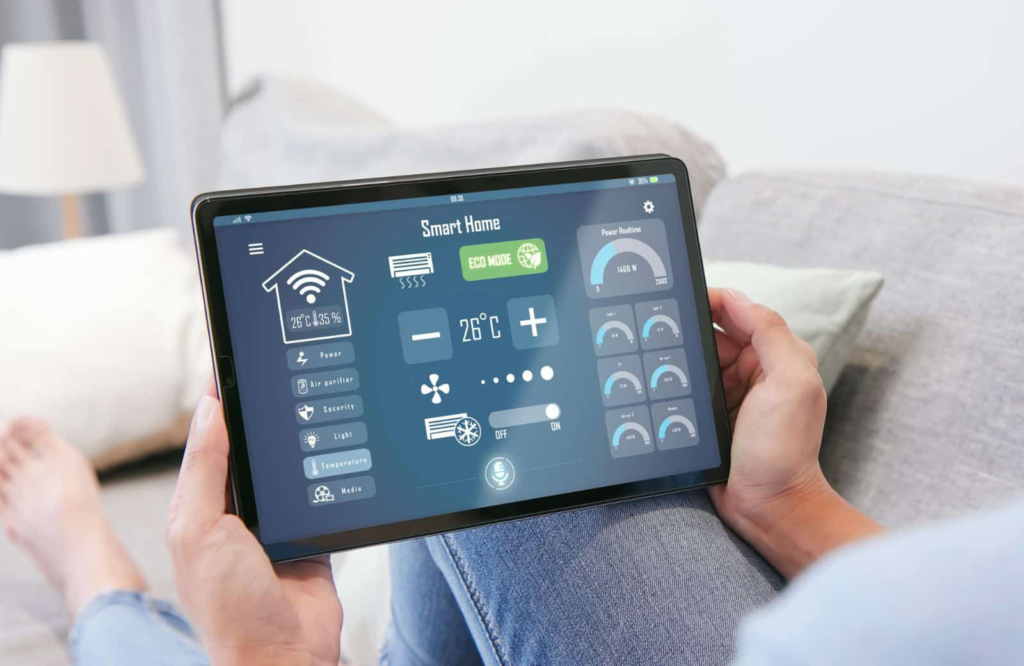
When choosing the best smart home technology, it’s essential to consider a few key criteria to ensure that it fits seamlessly into your life.
Here are the factors to keep in mind:
- Compatibility with Existing Devices
Your smart home devices should easily integrate with your current setup, whether lighting, security, or entertainment systems. Ensure your new gadgets are compatible with popular platforms like Amazon Alexa, Google Assistant, or Apple HomeKit to streamline control.
2. Ease of Installation and Use
No one wants to deal with a complicated installation process. Look for smart home systems with easy setups with plug-and-play devices or straightforward app guidance. User-friendly interfaces ensure that even those not tech-savvy can enjoy automation without frustration.
3. Scalability for Future Upgrades
Smart home technology is rapidly evolving. Choose systems that allow for easy expansion to add more devices in the future without starting from scratch.
4. Price vs. Functionality Comparison
Consider the balance between cost and features. Higher-end smart home technology may offer advanced features, but often at a premium. It’s crucial to assess whether those extra features are worth the investment based on your specific needs.
Importance of Robust Smart Home Security
Smart home security is essential. Your devices should provide reliable protection, including encrypted communications, secure Wi-Fi connections, and two-factor authentication to safeguard your home automation systems from potential threats.
These criteria can guide you in selecting the ideal smart home devices to elevate your living space while ensuring convenience and security.
Smart Home Brands and Their Products
In today’s connected world, smart home technology has transformed our lives. From security to convenience, smart home devices can make your life easier, more efficient, and more secure. Look at some of the top smart home brands and their products.

Photo Credit: Freepik
Amazon Alexa Ecosystem
Amazon has become a leader in the smart home space, with Alexa at the core of its ecosystem. Alexa offers seamless integration with a wide range of devices, making it a versatile choice for home automation.
Key Features and Devices:
- Alexa’s voice assistant controls various devices, from lights and thermostats to locks and security cameras.
- Amazon Echo (multiple models) serves as the central hub for the ecosystem.
- Alexa Routines automate tasks like adjusting the temperature, turning off lights, or starting the coffee maker.
Pros and Cons:
- Pros:
- Excellent voice recognition.
- Vast compatibility with third-party smart home devices.
- Regular software updates for new features.
- Cons:
- Privacy concerns due to Amazon’s data collection.
- Dependency on Wi-Fi for proper functionality.
Google Nest Ecosystem
Google’s Nest offers another popular smart home ecosystem, emphasizing simplicity and integration with Google services.
Popular Products:
- Google Nest Hub and Nest Audio for voice control and entertainment.
- Nest Learning Thermostat and Nest Protect smoke detectors for energy management and safety.
Integration with Other Smart Home Systems
- Easily integrates with devices from other manufacturers, including Philips Hue lighting and smart security cameras.
Pros and Cons:
- Pros:
- Excellent user interface with the Google Home app.
- Great integration with Google services (e.g., Google Calendar, YouTube).
- Cons:
- Fewer device options compared to Amazon.
- It may not support all third-party devices.
Apple HomeKit
Apple’s HomeKit ecosystem offers exclusive features and a high level of security, making it ideal for users already invested in Apple’s ecosystem.
Exclusive Features:
- Home app allows easy control of HomeKit-enabled devices across multiple Apple devices (iPhone, iPad, Mac).
- Siri integration for voice control.
- HomeKit Secure Video ensures privacy with end-to-end encryption.
Ideal User Profile:
- Perfect for those who already use Apple devices and prefer seamless integration with their phones, watches, and more.
- Pros and Cons:
- Pros:
- High-level security.
- Excellent user experience for Apple users.
- Cons:
- Limited compatibility with non-Apple devices.
- Fewer third-party device options than Amazon and Google.
- Pros:
Emerging Brands in Smart Home Technology
As smart home systems evolve, new brands are emerging with innovative products. Companies like Ring (focused on home security) and Wyze (affordable smart home devices) are gaining popularity.
According to a report by Fortune Business Insights, the global smart home market size is projected to grow from $121.59 billion in 2024 to $633.20 billion by 2032 at a compound annual growth rate (CAGR) of 22.9% during the forecast period.
Smart home devices and systems are reshaping modern living, offering unparalleled convenience, efficiency, and security. Whether you prefer the Alexa ecosystem’s versatility, the seamless Google Nest integration, or the privacy and exclusivity of Apple HomeKit, there’s a smart home solution for every user.
Here are some emerging trends shaping the future of smart homes:
- AI and Machine Learning Integration Smart home systems are becoming more intelligent with AI and machine learning. These technologies allow devices to learn from user behavior, making them more responsive and adaptable.
For instance, thermostats can automatically adjust to your comfort level, while security cameras can differentiate between familiar faces and strangers.
- Sustainable and Energy-Efficient Designs As eco-consciousness grows, energy-efficient designs are at the forefront of smart home technology. Solar-powered smart home devices and home automation systems that optimize energy use are increasingly popular. These systems help homeowners reduce their carbon footprint while saving on utility bills.
- Enhanced Smart Home Security Features Smart home security continues to evolve, offering more advanced features. New security cameras with facial recognition, doorbell cameras with motion detection, and integrated alarm systems enhance safety and peace of mind.
- Voice Recognition Advancements Voice recognition technology is becoming more sophisticated, allowing users to control their smart home with just a command. From lighting to security, voice assistants like Alexa and Google Home are streamlining home automation systems for easier management.
These trends set the stage for more connected, efficient, and secure living environments. As technology evolves, expect even more sophisticated features to improve home life.
According to a report by Forbes, the smart home market is expected to grow by 25.7% annually from 2023 to 2030, driven by the increasing demand for AI-powered devices and energy-efficient solutions.
Challenges in Choosing Smart Home Technology
The rise of smart home technology has revolutionized the way we interact with our living spaces. However, with this innovation come several challenges homeowners must consider before investing in smart devices.
1. Privacy and Data Security Concerns
One of the biggest concerns surrounding smart home systems is the potential for breaches in privacy. Smart home devices, from thermostats to security cameras, collect and share data about your daily life, habits, and preferences. If not properly secured, these devices can become a target for hackers, jeopardizing your personal information. According to a 2023 report by the
Federal Trade Commission, hackers have exploited vulnerabilities in smart home security systems, making it essential for consumers to ensure proper device security.
2. Compatibility Issues Across Ecosystems
Not all smart home devices work seamlessly together. You may purchase a smart home device with high expectations, only to find that it doesn’t integrate well with other systems or platforms you own. For example, a bright light bulb may be incompatible with your smart home security system or voice assistant. Ensuring compatibility between various smart home devices is crucial for a smooth home automation experience.
3. Costs of Installation and Maintenance
Setting up smart home systems can be expensive, especially when incorporating multiple devices. The costs go beyond the initial purchase, as installation and ongoing maintenance add to the financial burden.
Many systems require professional installation or subscription services for continuous monitoring and updates, which can strain household budgets.
Smart home technology has challenges, but overcoming them ensures a more secure and efficient home. You can enjoy a streamlined and integrated home automation experience by addressing privacy, compatibility, and cost.
FAQs
What smart home technology is the most convenient?
Voice-controlled technologies such as Amazon Alexa and Google Assistant make chores easier by providing seamless control over gadgets through simple instructions.
What smart technology works best for home security?
Smart security systems, such as Ring and Arlo cameras, as well as smart locks like August, offer real-time monitoring and remote control to ensure safety.
How might smart technology improve energy efficiency?
Smart thermostats such as Nest and Ecobee, as well as energy-efficient smart plugs and lamps, use automation to cut energy use.
Are there all-in-one solutions for smart home management?
Platforms like Apple HomeKit and Samsung SmartThings centralize control, integrating convenience, security, and efficiency in one ecosystem.
How can I choose the best technology for my needs?
Assess compatibility with existing devices, prioritize desired features, and select platforms that align with your budget and lifestyle.
Conclusion
Choosing the best smart home platform depends on your needs, preferences, and existing devices. Popular platforms like Amazon Alexa, Google Assistant, and Apple HomeKit each offer unique features, from voice control to integration with various smart devices. When starting, focus on compatibility, ease of use, and security features.
Begin with a few core devices and expand as needed. Embrace the potential of smart home technology and invest in solutions tailored to enhance your lifestyle.
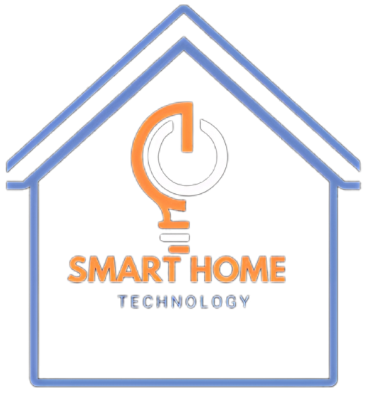
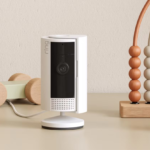
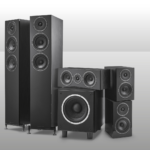
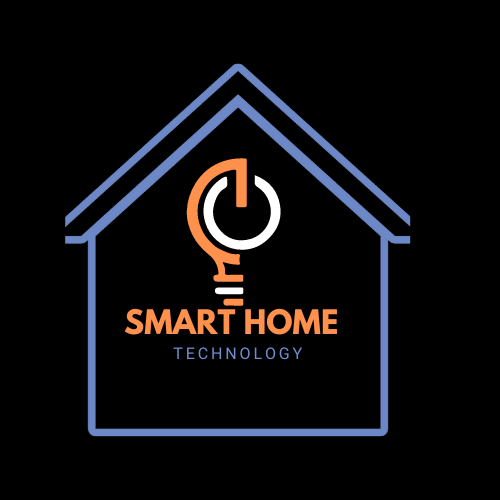
Pingback: Top 10 Samsung Home Theater Systems: Full Review - smarthomze.com